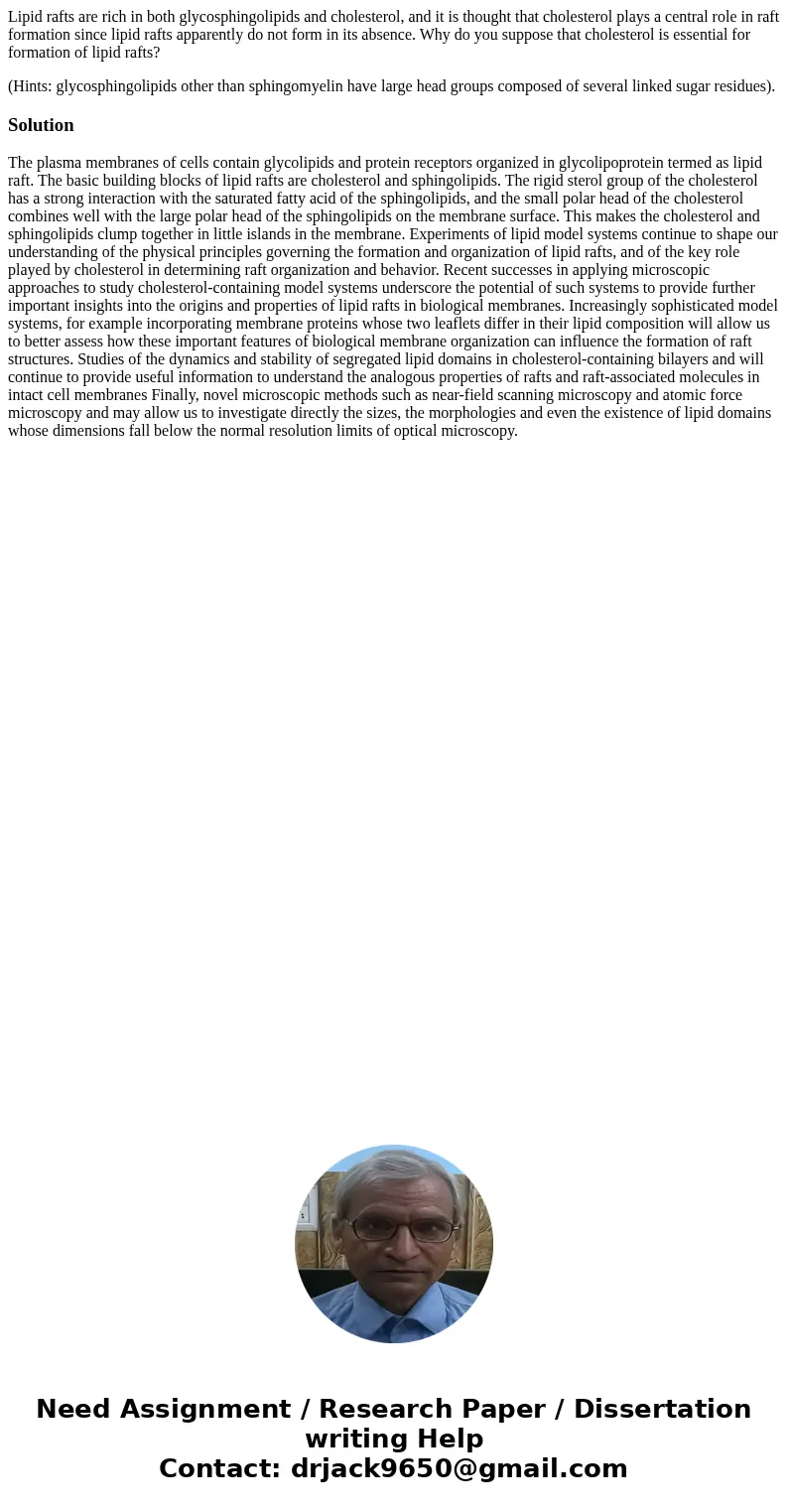Lipid rafts are rich in both glycosphingolipids and choleste
Lipid rafts are rich in both glycosphingolipids and cholesterol, and it is thought that cholesterol plays a central role in raft formation since lipid rafts apparently do not form in its absence. Why do you suppose that cholesterol is essential for formation of lipid rafts?
(Hints: glycosphingolipids other than sphingomyelin have large head groups composed of several linked sugar residues).
Solution
The plasma membranes of cells contain glycolipids and protein receptors organized in glycolipoprotein termed as lipid raft. The basic building blocks of lipid rafts are cholesterol and sphingolipids. The rigid sterol group of the cholesterol has a strong interaction with the saturated fatty acid of the sphingolipids, and the small polar head of the cholesterol combines well with the large polar head of the sphingolipids on the membrane surface. This makes the cholesterol and sphingolipids clump together in little islands in the membrane. Experiments of lipid model systems continue to shape our understanding of the physical principles governing the formation and organization of lipid rafts, and of the key role played by cholesterol in determining raft organization and behavior. Recent successes in applying microscopic approaches to study cholesterol-containing model systems underscore the potential of such systems to provide further important insights into the origins and properties of lipid rafts in biological membranes. Increasingly sophisticated model systems, for example incorporating membrane proteins whose two leaflets differ in their lipid composition will allow us to better assess how these important features of biological membrane organization can influence the formation of raft structures. Studies of the dynamics and stability of segregated lipid domains in cholesterol-containing bilayers and will continue to provide useful information to understand the analogous properties of rafts and raft-associated molecules in intact cell membranes Finally, novel microscopic methods such as near-field scanning microscopy and atomic force microscopy and may allow us to investigate directly the sizes, the morphologies and even the existence of lipid domains whose dimensions fall below the normal resolution limits of optical microscopy.

 Homework Sourse
Homework Sourse